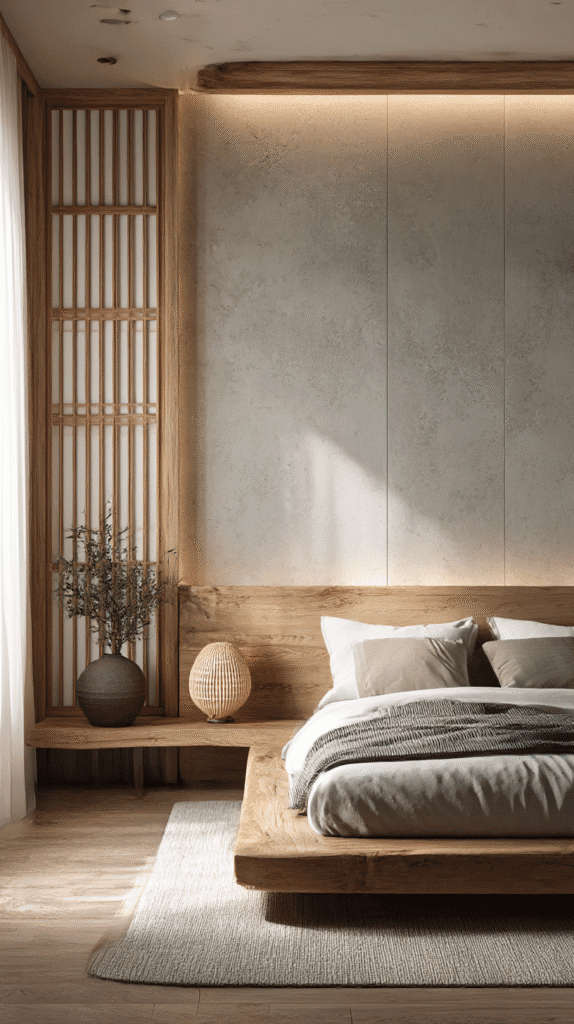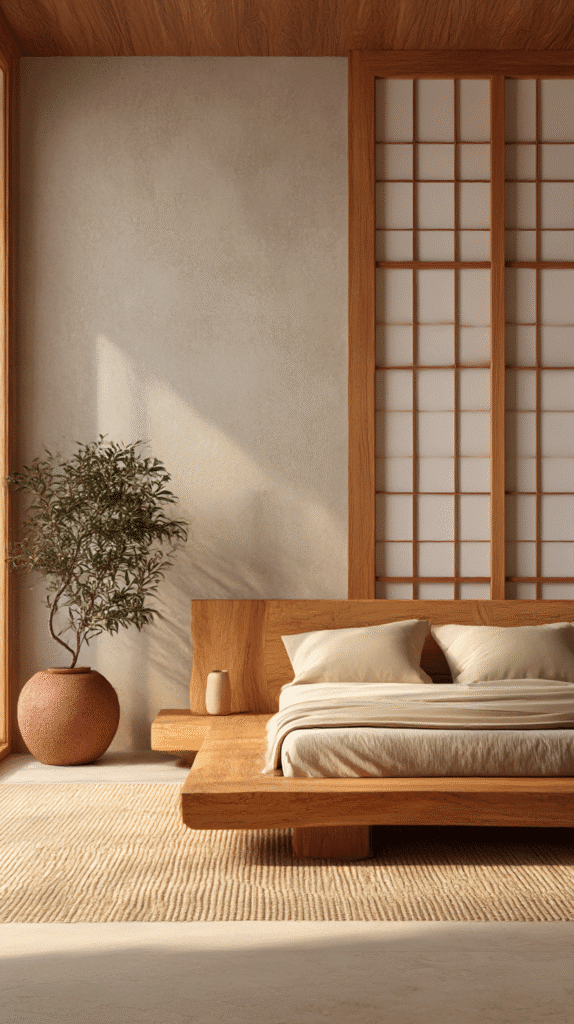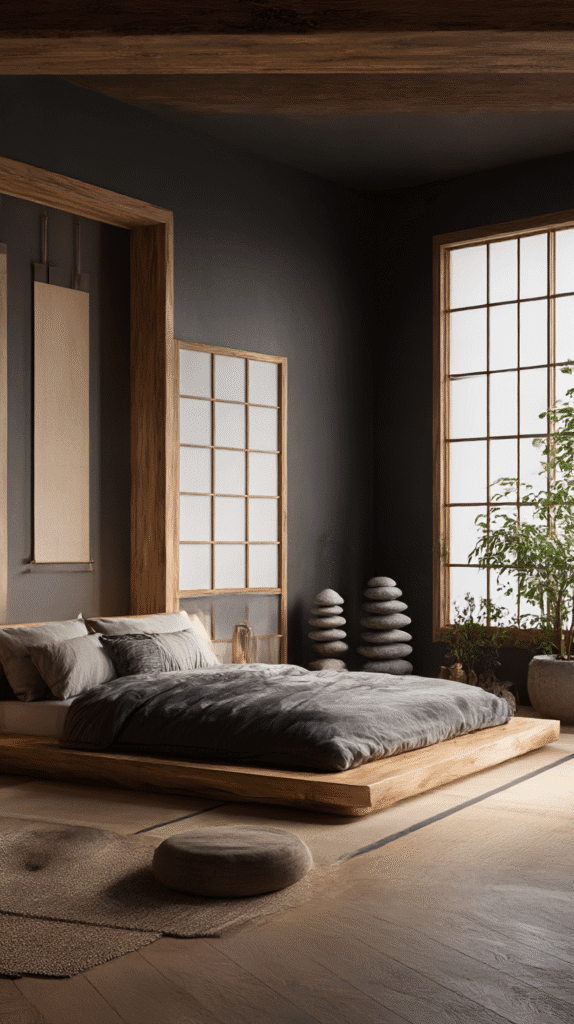
Introduction
Modern Japanese-style bedroom design offers an enchanting blend of minimalism, tranquility, and functionality, making it the perfect antidote to today’s fast-paced lifestyle. Think of a sanctuary where every piece of furniture speaks a language of purpose and peace. In this guide, we’re diving deep into bedroom furniture design through the lens of modern Japanese aesthetics—a timeless yet forward-thinking approach that continues to inspire designers around the globe.
Why does this topic matter now? As our lives become increasingly cluttered with information and activity, creating a serene and understated environment at home becomes more important. Whether you’re redecorating or moving into a new place, learning to embody Japanese elegance in bedroom furniture can not only refresh your space but also enhance your well-being.
By exploring the nuances of Japanese-style interiors, you’ll gain insights into curating a bedroom that goes beyond mere aesthetics. You’ll learn how to balance elements like textures, materials, and placements to achieve a truly harmonious environment.
Key Elements of Modern Japanese-Style Bedroom Design
The cornerstone of Japanese design lies in its philosophy and essential elements. It embraces the principles of wabi-sabi, the art of finding beauty in imperfection, and kanso, the idea of simplicity.
Natural Materials: Wood dominates Japanese interiors, with light oak or subtle shades dominating the furniture spectrum. Brands like MUJI offer reasonably priced wooden bed frames and storage options that perfectly capture this aesthetic—expect to spend around $300 to $800 depending on size and features.
Minimalism with Functionality: Less is more. Storage beds are particularly popular, allowing for a clutter-free room that retains visual harmony. Companies like IKEA have adapted these styles into affordably chic options.
Zen Colors: Earthy tones, whites, and gentle greens set the mood. Think Nicole Van Dyke’s philosophy of using nature-inspired palettes to evoke calm and comfort.
Indoor-Outdoor Connection: Infuse your design with elements from nature. Bring in indoor plants like bonsai or bamboo, both found at local nurseries or online marketplaces like The Sill. Cost varies by plant type and size but is generally affordable.

Step-by-Step Guide to Creating Your Zen Space
First, find your focal point. Ideally, your bed should be the centerpiece. Choose a low wooden bed frame to maintain that sleek, grounded Japanese essence. Add a tatami mat or a simple area rug to complement.
Next, focus on storage. Utilize multi-functional pieces, such as a dresser or a credenza that can double as a bench or display unit—think about options from West Elm which start around $500.
Lighting makes a huge difference. Opt for paper lanterns or minimalist lamps that emit warm, ambient lighting. Brands like Yamagiwa offer designs inspired by rice paper lamps that are both functionally efficient and aesthetically pleasing.
Finally, personalize with subtle textures and personal touches—maybe an Ikebana arrangement or a set of handcrafted ceramics that speak to your personality.
Trend Forecasts for 2026 and Beyond
Design trends in 2026 will see an even greater emphasis on sustainability. Expect emerging brands to offer eco-conscious furniture, utilizing reclaimed or fast-growing materials like bamboo—binding affordability and aesthetics.
The use of smart fabrics in furniture coverings that adapt to changes in temperature and lifestyle will become more prevalent. Companies like Coalesse are already pioneering such technologies that respond to personal comfort needs.
Moreover, mixed-material designs that combine traditional wood with modern composites will emerge, creating a fusion of the old and new elements that speak visually and practically to the contemporary consumer.

Common Mistakes to Avoid
One of the biggest mistakes is over-cluttering the space. Remember that Japanese design thrives on minimalism and any excess could disrupt the harmony.
Avoid heavy, dark furniture. The aim is to maintain a light, airy feel, versus heavy Victorian-style pieces that may feel oppressive.
Disregarding the tactile experience is also frequent. While smooth surfaces might look trendy, varying textures bring depth, an often overlooked aspect that adds warmth and engagement to the room.
Designer Takes and Real-Life Examples
Japanese-American designer George Nakashima is a pioneer you’ll want to follow. His approach to furniture that embeds the natural grain and texture of wood into the design has set a trend.
Consider YouTube design channels like “Home Design With Julie,” which showcases makeovers involving Japanese-style interpretations. Her video guides often highlight DIY ways to incorporate minimalism effortlessly into any space.
On platforms like Pinterest, you’ll find countless boards dedicated to this style, offering inspiration from everyday designers capturing the essence of Japanese and translating it into tangible bedroom comfort.
By following these insights and inspirations, you’ll be equipped not just to follow trends, but to create a bedroom that truly echoes peace and harmony—transforming your personal space into a modern Japanese-style sanctuary.


